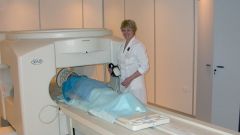You will need
- medical policy of obligatory insurance;
- - passport;
- - the direction of the survey.
Instruction
1
To measure intracranial pressure using a special pressure gauge. The doctor inserts the spinal canal or ventricles of the brain, thin needle. The pressure gauge begins to record the pressure and displays it in millimeters of mercury.
2
If, during the puncture you are in a horizontal position, indicators from 60 to 200 would be considered the norm. However, some experts argue that the rule should include a pressure from 80 to 140 millimeters of mercury. The puncture is performed in the hospital where the patient hospitalityat the day before.
3
Children to measure intracranial pressure conducting neurosonography. The most reliable results can be obtained in babies first year of life, when the Fontanelle was not quite closed. Indirect results about the increase of the ventricles give the doctor a reason to judge of the increased intracranial pressure. After the closure of the fontanel, this method is ineffective.
4
Magnetic resonance or computed tomography is performed in all patients. The purpose for this type of survey can be obtained only if a doctor has a strong suspicion that the pressure really increased and causes systematic headaches and poor health.
5
Hardware echoencephalography method, which is indirectly possible to judge the increased intracranial pressure. For pulsation and vascular tone the doctor suspects the presence of increased intracranial pressure. But on the basis of this examination to put a definite diagnosis impossible.
Note
Despite the fact that medicine has leaped forward, to measure intracranial pressure is still quite difficult and the only reliable method is needling.






